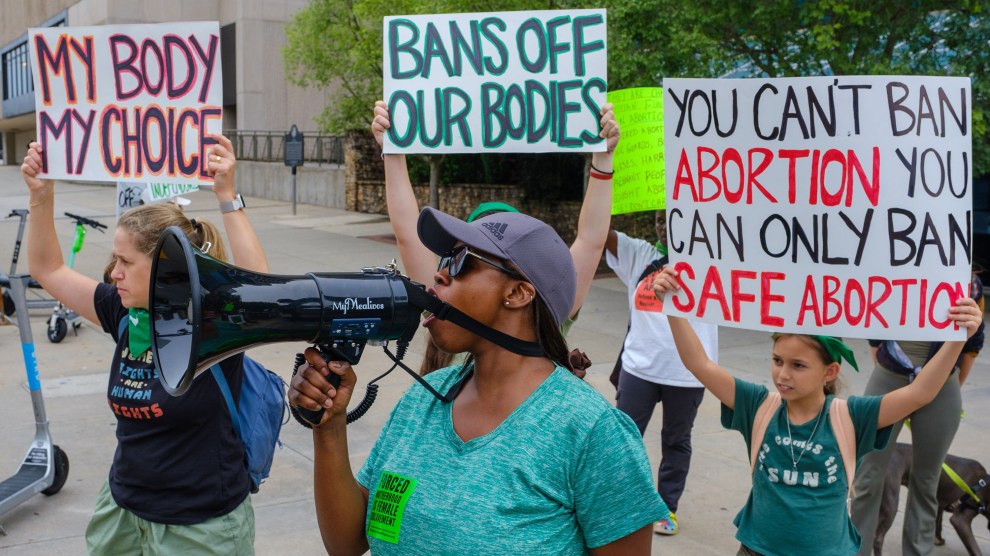
Islenia Mil
For nearly three years of med school, I teased my friends who wanted to specialize in surgery. I’d heard stories of tantrums in the operating room, of residents too tired to be friendly, much less teach. But the first time I sutured a jumbled gash into a thin, smooth line, I knew I wanted to be a surgeon.
All medical students tell a version of this story, most of us acting as if our hero’s journey has nothing to do with the money. But everything in medicine is about the money in some way or another. The higher a specialty’s salary, the more people want to do it and the more competitive it becomes. As medical burnout has become practically universal, flexible specialties like radiology are becoming more popular, as students flee specialties like emergency medicine that put them on the front lines of American poverty and, more recently, a flat-footed pandemic response. Pediatrics, family medicine, and primary care do more than other specialties to extend patients’ lives and keep them out of the hospital, but they tend to be the lowest-paid specialties in medicine. Medical students know it, and we vote with our feet. Between 2013 and 2020, the number of positions unfilled in pediatrics has more than quintupled. This past March, nearly 600 residency positions in family medicine went unfilled. By contrast, virtually every residency spot in radiology and plastic surgery in the United States got filled.
How did such critical branches of medicine become so undersubscribed and undercompensated? For one thing, medical training is generally longer and more expensive than it was for the generation that now runs America’s hospitals. More than half of med students graduate with an average of $200,000 of debt. The more you make, the faster you can pay it off and buy a house as big as your college classmate’s who went to work for a pharmaceutical company. Doctors are as status-conscious as other white-collar professionals, so gradations in income contribute to gradations of respect. Even though plastic surgery might be less righteous than family medicine, it pays more than twice as much.
But why do doctors who suture skin grafts make so much more than doctors who vaccinate children? There are many players, but few are as powerful as the Relative Value Unit Update Committee, or the RUC. As influential as its name is boring, the RUC is composed of representatives from the American Medical Association and medical specialty professional organizations, from the American Academy of Family Physicians to the American Urological Association. The RUC was formed in 1992 so doctors could offer the Centers for Medicare & Medicaid Services (CMS) their expert opinions on how long and complex the care they provided was. Since CMS accepts the RUC’s recommendations most of the time—and private insurance companies look to CMS when setting their prices—a group of 32 health professionals sets most prices for a sector that includes almost one-fifth of the US GDP.
In general, the RUC assigns procedures the most relative value units, or RVUs, which—to simplify things—doctors eventually submit to insurance to get paid. Although both specialists and generalists work 50 hours a week, their time is valued very differently. For instance, a radical prostatectomy—in which a surgeon removes the prostate and reconnects the urinary tract—is a common procedure that takes between three and four hours and receives 42 RVUs. By contrast, in 2021, evaluation and management—the cornerstone of general medicine that entails everything from an extensive patient interview to a physical exam and a meticulous note to document the encounter—received roughly 2 RVUs. Many general practitioners spend countless hours coordinating patient care among various specialists, social workers, and pharmacists, and they are only allowed to submit a code for 30 minutes of their labor once per month, and many private insurance companies do not reimburse them.
For decades, the RUC has propped up a system in which doctors who provide the most general care for patients receive the lowest compensation from government insurance programs. How? Think of the urologist as a US senator from West Virginia. Sure, they may only represent 10,000 doctors, but they have the same representation on the RUC as a family physician who represents 120,000 doctors. Of the 27 medical specialties represented on the RUC, 13 are surgical and procedural. The generalists have only six spots despite representing more than twice as many doctors. Since the amount of money that government insurance programs spend on medical services can only be increased by Congress, any modifications that the RUC recommends must be budget neutral. So even if you plundered the margins from a West Virginia–size specialty like urology ($410,000 a year; 10,000 across the country), it wouldn’t amount to much of an increase for a California-size specialty like family medicine ($220,000 per year; 120,000 across the US). Even after CMS under the Biden administration increased the RVU for evaluation and management appointments in 2021, many GPs haven’t seen an increase in their pay.
Dr. Bryan Carmody, a pediatric nephrologist in Virginia, points out another problem: The federal government pays for nearly 90,000 residencies through Medicare but exerts almost no influence or central planning on how many residency spots exist to address the public good. “There’s no mechanism for rightsizing the number of residents,” Carmody told me in an interview. “Hospitals will make a residency if they want, and there’s no guarantee which specialties it will be.” Many communities—particularly in rural America—lack the money or the number of patients to justify a residency program and are, without government intervention, unable to train doctors to serve people where they live. There are shortages of primary care physicians and geriatricians—the Association of American Medical Colleges guesses that the US will be short between 17,000 and 48,000 primary care physicians by 2034—and training more doctors won’t address this shortage if they all try to become surgeons.
Carmody thinks that central planning could help. CMS could set goals for the number of general practitioners and orthopedic surgery residencies it will pay for and fund only hospitals that allocate residencies in line with these goals. Or they could use a voucher system, giving money directly to medical students who choose to enter primary care specialties.
Of course, autonomy is the bedrock of the clout and money that medical specialists have fiercely protected since the advent of modern medicine in America, working within professional societies and government. (There are four specialists in the Senate GOP caucus!) Any serious overhaul of the way that doctors are paid would require an act of Congress, and there are few champions for doctors who already make $200,000 a year. I joke (sort of) that medicine is one of the few jobs where you get to be rich and self-righteous at the same time, and it seems that in spite of the stories we tell, a lot of us—professional groups, doctors, medical students—are swayed much more by riches than by righteousness.














